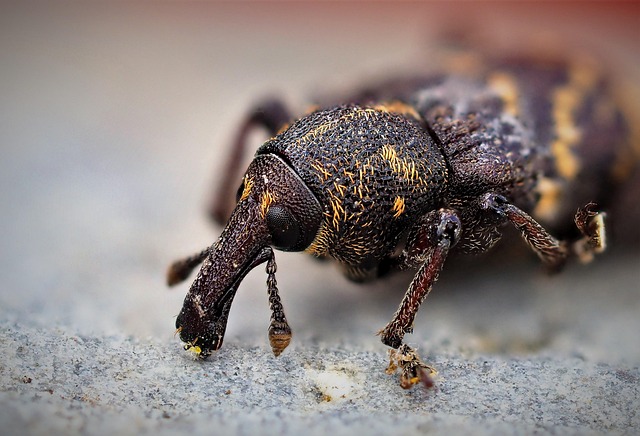Monthly pest control maintenance for cattle pastures in Highlands Ranch is a strategic investment that boosts productivity and animal welfare through proactive, holistic strategies. Tailored plans consider local wildlife, climate, and grazing habits, incorporating natural predators, crop rotation, and targeted chemical interventions to minimize environmental impact. This approach offers significant advantages, including early issue identification, disruption minimization, ecological balance promotion, and cost savings, making it an attractive and sustainable option for responsible property stewardship.
In the vibrant landscape of Highlands Ranch, maintaining healthy cattle pastures is paramount. This is where cost-effective pest control for cattle pastures comes into play, serving as a crucial component of sustainable farming practices. By understanding monthly pest control maintenance and its benefits, local ranchers can ensure optimal herd health and productivity. This article explores effective strategies, delving into “Understanding Monthly Pest Control Maintenance for Cattle Pastures,” “Benefits of a Regular Pest Management Plan in Highlands Ranch,” and “Cost-Effective Strategies for Sustainable Pest Control.”
- Understanding Monthly Pest Control Maintenance for Cattle Pastures
- Benefits of a Regular Pest Management Plan in Highlands Ranch
- Cost-Effective Strategies for Sustainable Pest Control
Understanding Monthly Pest Control Maintenance for Cattle Pastures

Monthly pest control maintenance for cattle pastures in Highlands Ranch is an investment that pays dividends in both productivity and animal welfare. By implementing a proactive approach, rather than reacting to infestations, farmers can achieve cost-effective protection against a wide range of pests. This strategy involves regular inspections, targeted treatments, and continuous monitoring to ensure the health and safety of your cattle and the overall ecosystem.
Cost-effective pest control for cattle pastures isn’t one-size-fits-all. It requires understanding the unique challenges posed by local wildlife, climate patterns, and grazing habits. Customized maintenance plans can include integrated pest management (IPM) techniques, such as using natural predators, crop rotation, and targeted chemical interventions only when necessary. This holistic approach not only minimizes environmental impact but also reduces long-term costs associated with persistent pest issues.
Benefits of a Regular Pest Management Plan in Highlands Ranch

In Highlands Ranch, a regular pest management plan offers numerous advantages for both residents and local businesses, especially when tailored to cost-effective pest control for cattle pastures. By implementing a proactive approach, rather than reacting to infestations, property owners can significantly reduce long-term expenses. Regular inspections identify potential issues early on, allowing for swift action that prevents pests from multiplying and causing extensive damage. This not only saves money but also minimizes disruption to daily life and business operations.
Additionally, consistent pest control measures contribute to a healthier environment by promoting the balance of local ecosystems. Targeted treatments reduce the use of harsh chemicals, minimizing ecological impact and ensuring the safety of non-target organisms, including beneficial insects and wildlife. This sustainable approach aligns with the growing demand for eco-friendly solutions, making regular pest management an attractive option for responsible property stewardship in Highlands Ranch.
Cost-Effective Strategies for Sustainable Pest Control

Implementing sustainable and cost-effective pest control strategies is a win-win for both farmers and the environment, especially when considering long-term goals. For cattle pastures in Highlands Ranch, focusing on prevention is key to avoiding costly treatments. Regular rotation of crops and grasses can disrupt pest life cycles, as pests tend to specialize in specific plant species over time. By maintaining diverse vegetation, farms can naturally deter pests and reduce reliance on chemical interventions.
Additionally, establishing buffer zones around fields and water sources can create a physical barrier against pest movement. These strategies, combined with monitoring programs that identify pest issues early, allow for targeted, spot treatments instead of widespread applications. This not only minimizes environmental impact but also reduces costs associated with chemical usage and potential resistance development in pest populations.
Implementing a tailored pest control monthly maintenance plan for your cattle pastures in Highlands Ranch offers numerous benefits, including improved livestock health and increased productivity. By adopting sustainable practices and cost-effective strategies outlined in this article, you can effectively manage pests while minimizing environmental impact and saving money in the long term. Embrace these proactive measures to secure a healthier, more prosperous future for your ranch.
